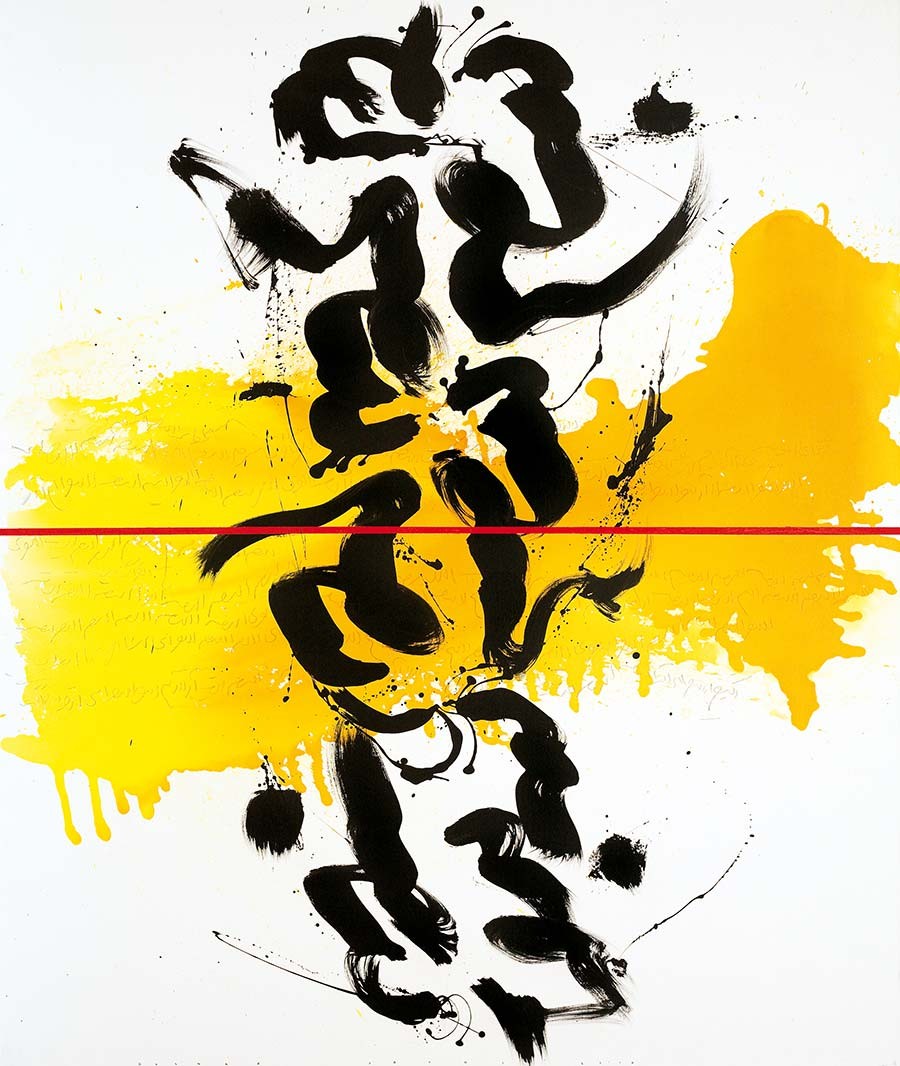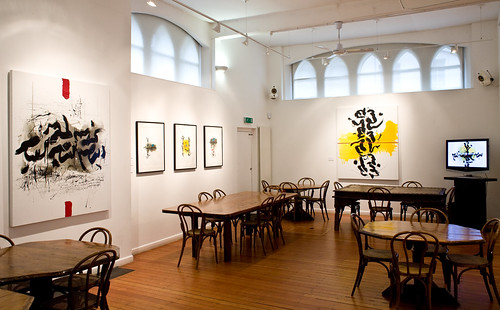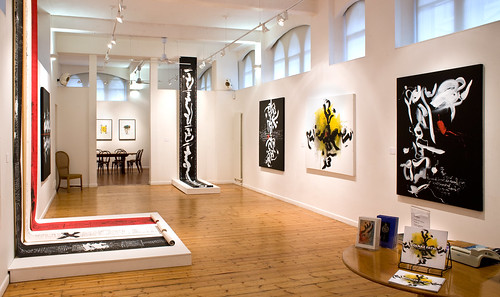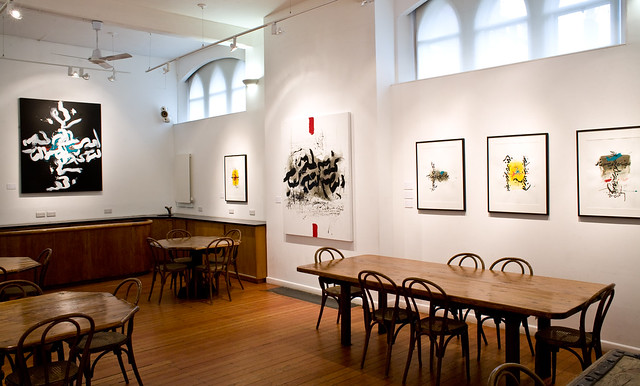London,
24 Old Gloucester Street Bloomsbury, London WC1N 3AL
11 November 2010 - 22 January 2011
October Gallery presents new paintings by Golnaz Fathi in her second solo exhibition to be held in London.
Fathi investigated ever more abstract forms of representation, using modern media to aid these explorations, whilst still basing her work on fundamental calligraphic practices and techniques. The introduction of bold swatches of colour further emphasised her transition from a codified system based on prescriptive rules to an alternative idiom that gave precedence to her own imaginative modes of subjective expression.
Fathi investigated ever more abstract forms of representation, using modern media to aid these explorations, whilst still basing her work on fundamental calligraphic practices and techniques. The introduction of bold swatches of colour further emphasised her transition from a codified system based on prescriptive rules to an alternative idiom that gave precedence to her own imaginative modes of subjective expression.
Early twentieth-century avant-garde artists such as Henri Michaux, Christian Dodremont (a founding member of CoBrA) and Brion Gysin undertook similarly ground-breaking explorations of the liminal boundaries of the legible in the western tradition, founding their ‘logograms’ and ‘cut-ups’ on abstract calligraphies based on imaginary scripts. Significantly, each of these artists (all of whom were also poets), were inspired by Oriental languages, although Gysin was the only one actually well-versed in both the Japanese and Arabic languages and their associated writing systems.
Oriental and Arabic artists too – Xu Bing, (China) Rachid Koraïchi, (Algeria) etc. - push the boundaries of legibility and intelligibility in their work up to and even beyond the boundaries of literal sense. The more extreme forms of this ‘automatic writing’ have sometimes been called ‘asemic’ – the term implying that it has no meaningful content at all. But the startling and original work of Fathi must rather be thought of as ‘polysemic’ – dense as it is with potential meanings and interpretive possibilities. As we try to ‘read’ her works, the canvases speak directly to the unconscious mind of each individual viewer, evoking responses that exist in all of us – whether or not we are conscious of their presence. Her works are to be interrogated and then listened to for an answer in their turn. The returning waves tell us something of the questions hidden just below the surface of our everyday waking consciousness: soliciting answers to submerged questions that we may not even have realised we were asking at the time.
Oriental and Arabic artists too – Xu Bing, (China) Rachid Koraïchi, (Algeria) etc. - push the boundaries of legibility and intelligibility in their work up to and even beyond the boundaries of literal sense. The more extreme forms of this ‘automatic writing’ have sometimes been called ‘asemic’ – the term implying that it has no meaningful content at all. But the startling and original work of Fathi must rather be thought of as ‘polysemic’ – dense as it is with potential meanings and interpretive possibilities. As we try to ‘read’ her works, the canvases speak directly to the unconscious mind of each individual viewer, evoking responses that exist in all of us – whether or not we are conscious of their presence. Her works are to be interrogated and then listened to for an answer in their turn. The returning waves tell us something of the questions hidden just below the surface of our everyday waking consciousness: soliciting answers to submerged questions that we may not even have realised we were asking at the time.



